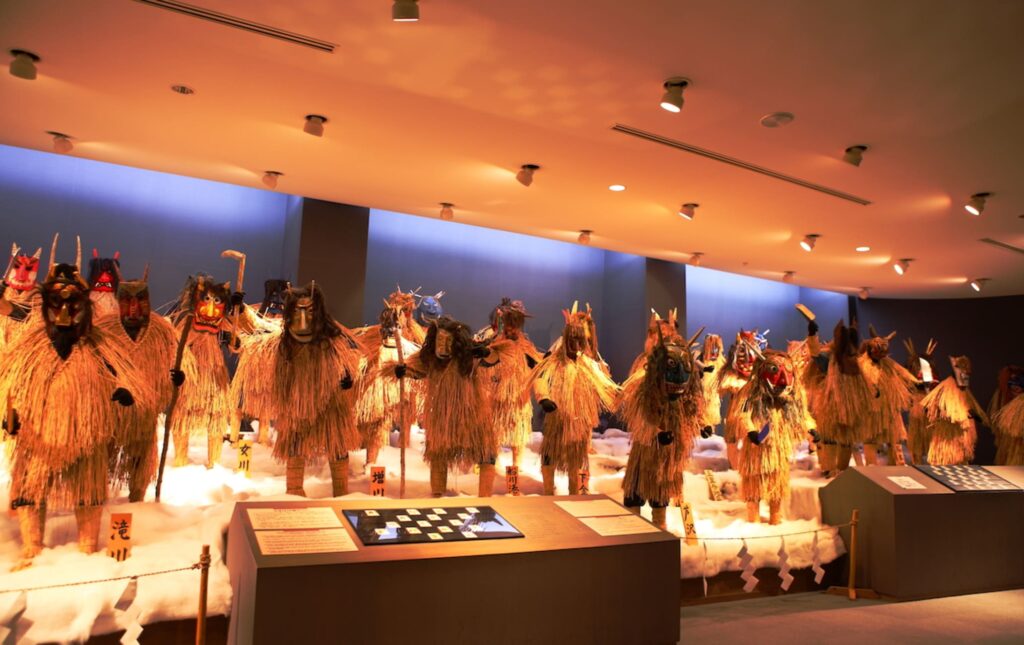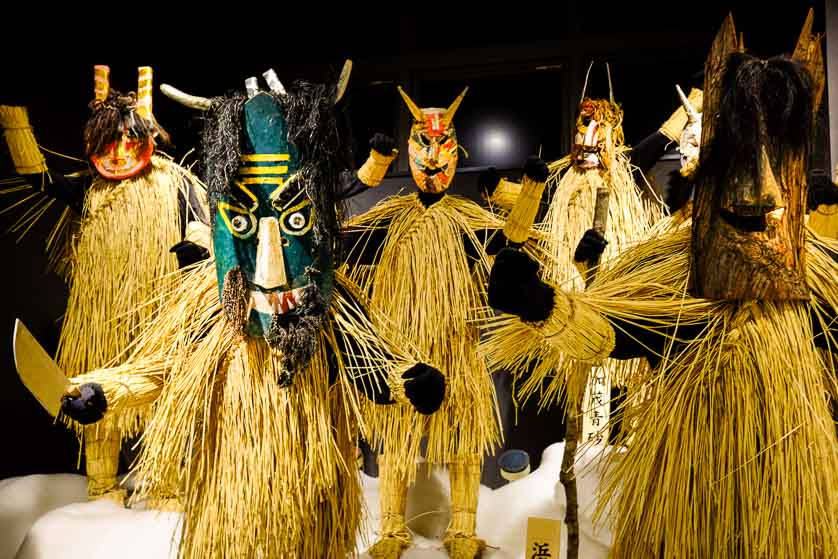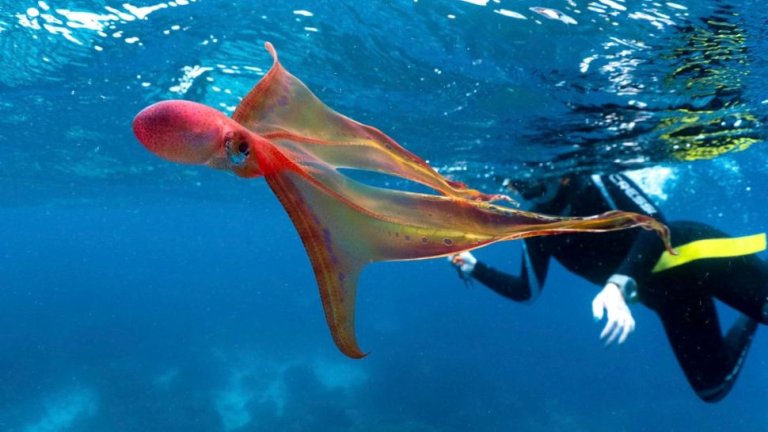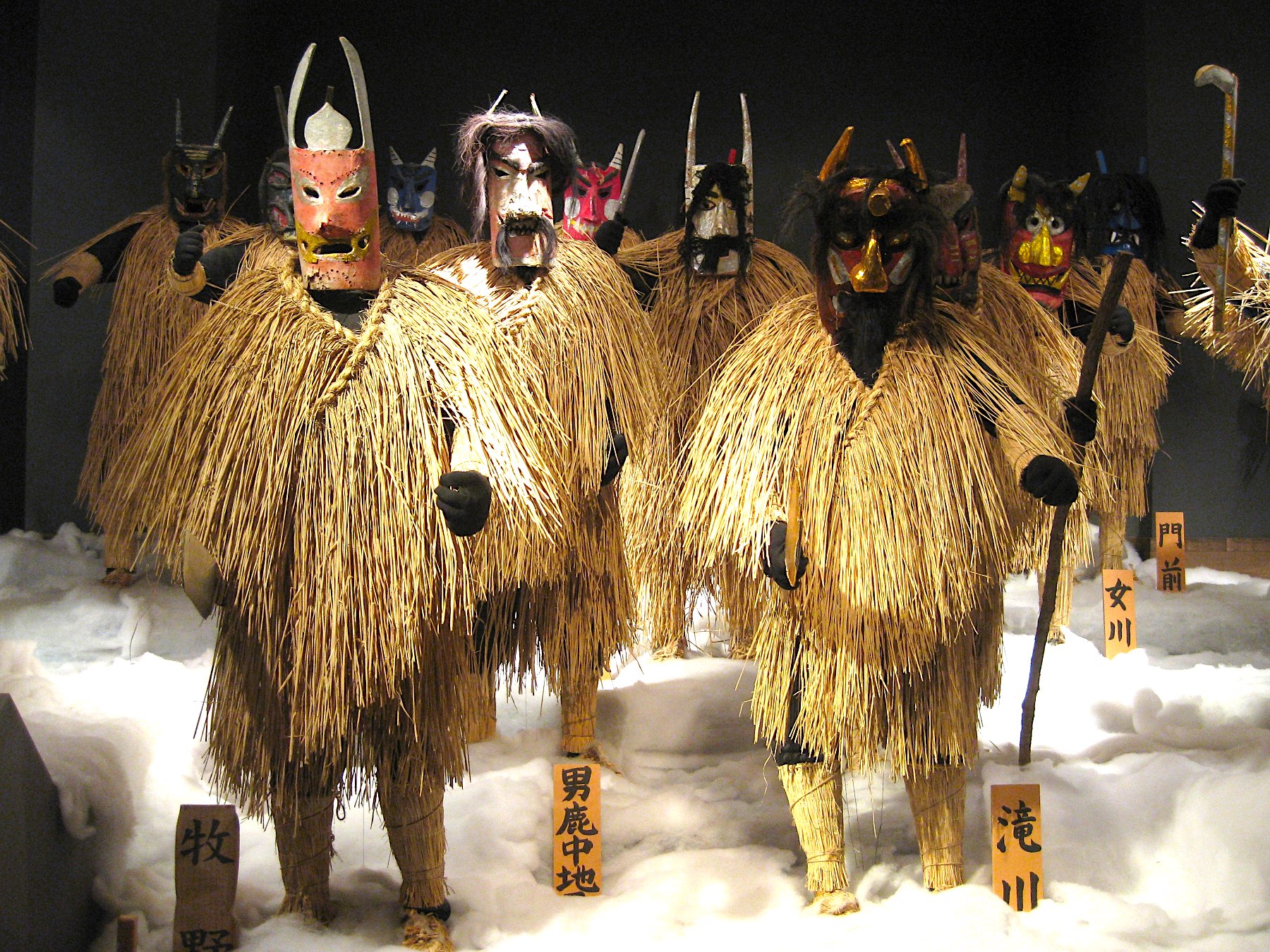Nestled in the scenic Oga Peninsula of Akita Prefecture, the Oga Namahage Museum is more than just a museum it’s a portal into one of Japan’s most fascinating and eerie folk traditions. The Namahage ritual has been practiced for centuries, and this museum provides visitors with a hands-on cultural experience, showcasing both the folklore and the artistry behind these iconic demons.
Whether you’re a culture enthusiast, a photographer seeking unique shots, or a traveler curious about Japan’s rural traditions, the Oga Namahage Museum offers something unforgettable.

The Namahage Tradition: A Brief History
The Namahage are fearsome, ogre-like figures in Japanese folklore, dressed in straw garments and wearing carved wooden masks with fierce expressions. Traditionally, Namahage visit households during New Year’s Eve, admonishing children who have been lazy or naughty and blessing families with good fortune for the year ahead.
This ritual originated in the Oga region hundreds of years ago, blending Shinto beliefs, rural customs, and community storytelling. Namahage performances are not merely for entertainment they were historically meant to instill discipline, respect, and safety within local communities.
Highlights of the Oga Namahage Museum
1. Namahage Costume Exhibits
The museum displays an impressive collection of traditional Namahage costumes, from elaborately carved masks to handwoven straw clothing. Each mask has its own unique expression, some appearing terrifying while others are more comical, offering insight into the artistry and symbolism behind these cultural icons.
2. Interactive Performances
One of the most popular features of the museum is the live Namahage performance. Staff members don full costumes and re-enact the rituals, complete with loud stomps, shouting, and dramatic gestures. Visitors often feel both thrilled and slightly scared, making this experience memorable for adults and children alike.
ALSO SEE : The Benefits of Music for Health and Everyday Life
3. Cultural and Educational Exhibits
Informative panels and multimedia displays explain the history, folklore, and spiritual significance of Namahage. You can learn how the tradition evolved over the centuries and how it continues to be a symbol of Akita’s heritage today.
4. Souvenirs and Crafts
The museum’s gift shop offers miniature Namahage masks, keychains, and local crafts. These make perfect souvenirs and a tangible reminder of the experience. Photography of the costumes is allowed, so you can capture the intricate details of the masks and straw garments.

Visiting Tips
- Best Time to Visit:
- Visit in December to coincide with the Namahage Festival, where the ritual is performed across the Oga Peninsula.
- Off-season visits are still worthwhile to explore the museum and nearby attractions.
- How Long to Stay:
- Plan 1-2 hours to explore the exhibits and watch the interactive performances.
- Photography Tips:
- Capture close-ups of masks to showcase their intricate carvings.
- Use natural light from windows for best results inside the exhibit rooms.
- Getting There:
- Accessible via JR Oga Line from Akita Station.
- Combine the visit with Oga Onsen or the Sea of Japan coast for a full-day itinerary.
- Languages:
- Exhibits are available in Japanese and English, making it accessible for international travelers.
Things to Do Around the Museum
- Oga Onsen – Relax in hot springs and experience Japanese hospitality.
- Oga Shinzan Folklore Museum – Learn even more about local history and folk traditions.
- Sea of Japan Coastline – Take scenic photographs and enjoy the ocean views.
- Namahage Festival – If visiting in December, don’t miss the chance to see Namahage roaming the streets of local villages.
ALSO SEE : Exploring the Floating Villages of Inle Lake, Myanmar: A Unique Beauty on Water
Why Visit Oga Namahage Museum?
- Cultural Immersion: Offers a firsthand experience of a centuries-old tradition.
- Family-Friendly: Engages both children and adults with interactive exhibits.
- Photography Opportunities: Unique costumes and performances provide excellent visual storytelling.
- Educational: Learn about Japanese folklore, history, and rural customs.





